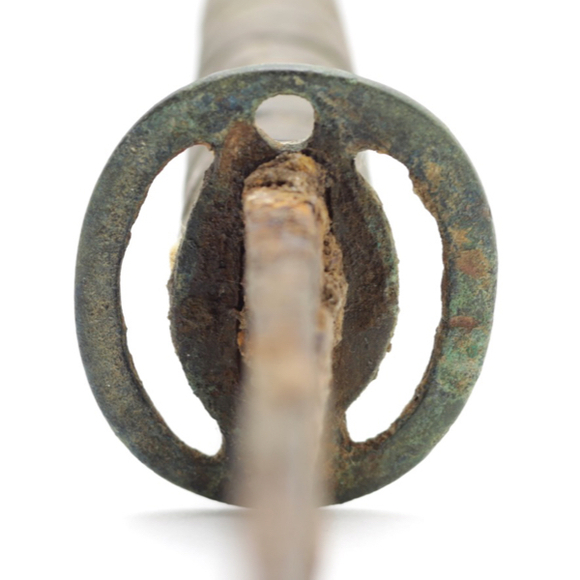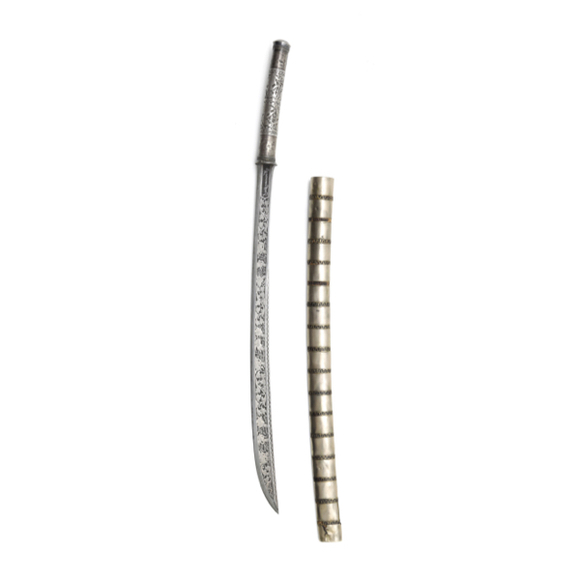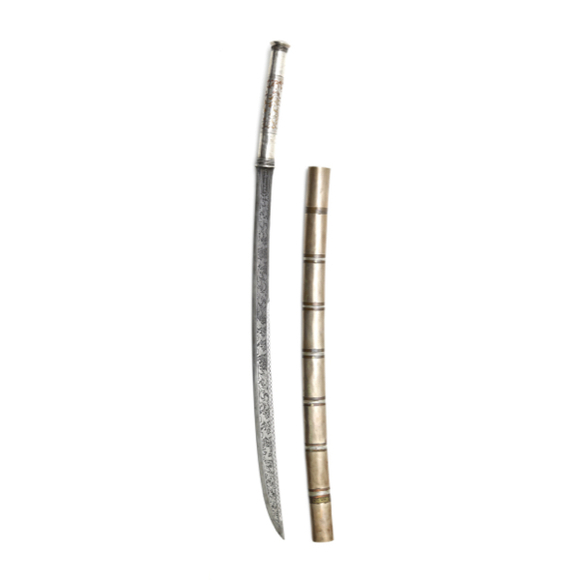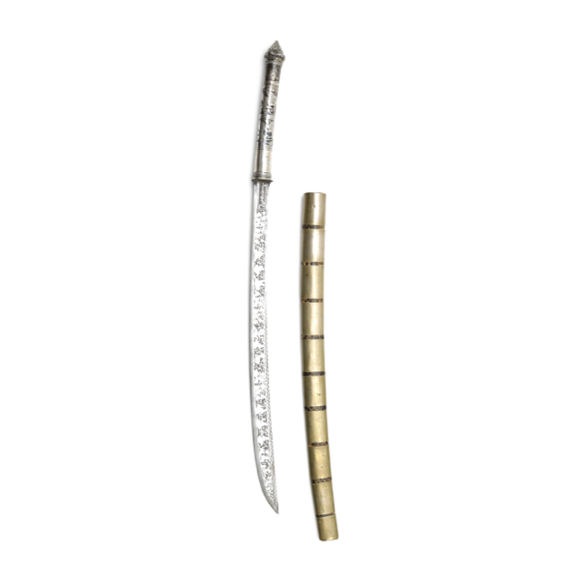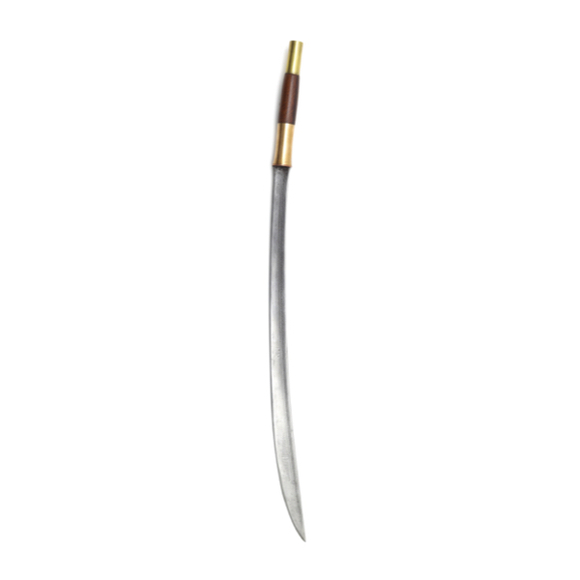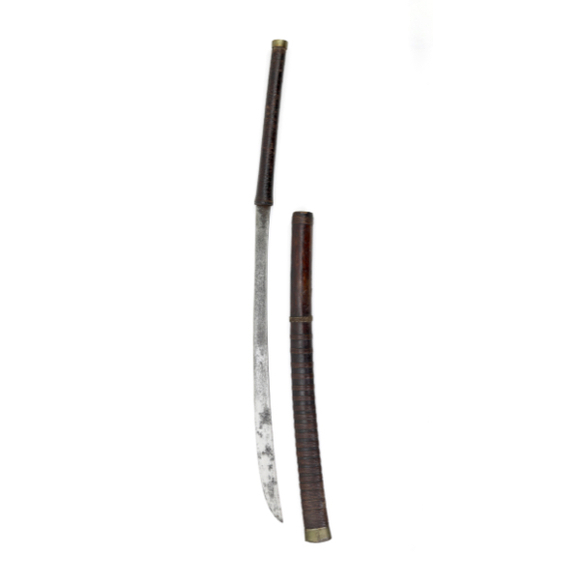In excavated condition, with copper alloy hilt.

Sheathed 71.3 cm
Sword 67 cm
45.7 cm
Base 8 mm
Middle 5 mm
5 cm from tip 3.5 mm
Narrowest at base 26 mm
Middle 29 mm
5 cm from tip 18 mm
455 grams
10 cm from hilt
Iron, steel, wood, copper, cotton, resin
Burma
19th century
Description
One of the rarest forms of dha, it has a hilt and scabbard carved like a bird. The blade is as curious as the rest, with a slightly recurved shape that reminds a little of an Ottoman yataghan. The blade geometry, with a wide base that rapidly narrows, and the long backedge, point towards Burmese manufacture. As does the steel construction with a high-carbon outer layer with no discernable pattern but a clear heat treatment are typical for Bamar and Shan work.
The hilt is carved like an abstract bird head with a long beak. Its eyes are brass nails with iron washers. It has a red copper ferrule. The bird theme continues on the scabbard where wings and legs are carved. The scabbard further has copper mounts on each end, two copper rings and round copper ornamental plates on either wing.
It still retains a piece of faded, once red cotton cord.
Comparable examples
One such sword was in the collection of George Cameron Stone, who published it in his glossary.1 A few others are circulating between collectors and dealers in the last decade or so, one was sold by Oriental Arms many years ago, item number 8247.
Perhaps the most interesting of this group is held in the Horniman museum, London, accession number 1689. There is an old label attached to it:

"Shan crow sword used by
Shan soldiers o ??? "
Notes
1. Stone, George C.; A Glossary of the Construction, Decoration and Use of Arms and Armor: in All Countries and in All Times. (Reprint) Jack Brussel, New York, 1961. Page 207.
Theories
The bird depicted, even though very abstract, may resemble one of the birds often seen around lakes in Burma, such as the Indian pond heron. There is a theory that the Intha people that live around Inle Lake, some 150 km southwest of Mandalay, revered such birds bird as they, too, sat on its shores waiting for a fish to skewer with their 10 foot fishing spear.1
"They dress as Shans, both men and women, but the latter wear black-lacquered string garters to show off the whiteness of the leg, which Shan belles do not think necessary. Neither Shans nor Burmans can understand them, unless they know both languages." 2
Given this second statement, the Inthe could have easily been mistaken for Shans by whoever wrote the label on the Horniman museum example.
Until now its just a theory, but worth exploring further.
Notes
1. James George Scott; Burma: a handbook of practical information. 1906. Page 208.
2. Ibid. Page 68.




















Fine silver overlaid dha made in Mindan village, south of Mandalay, gained fame in the 19th…

